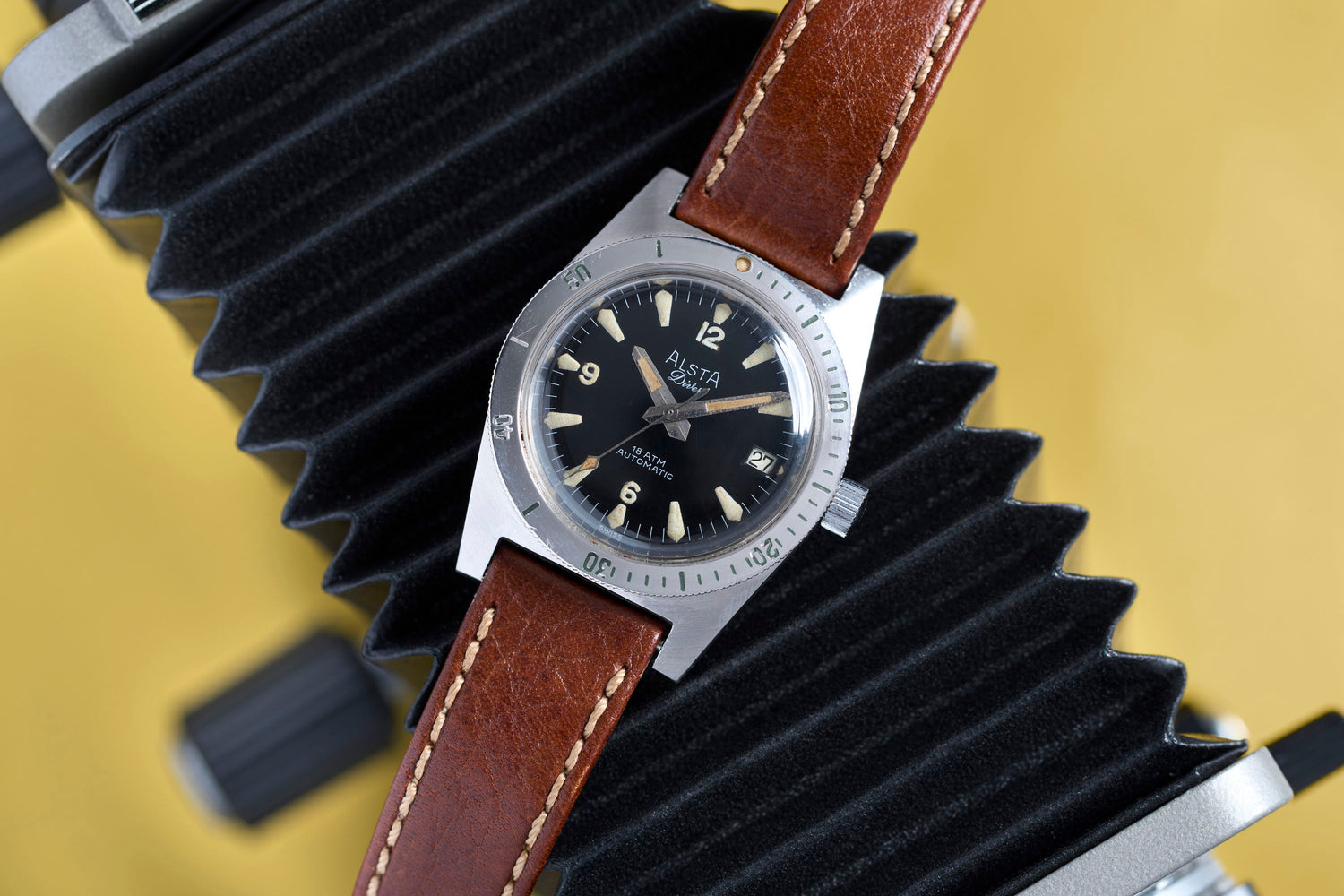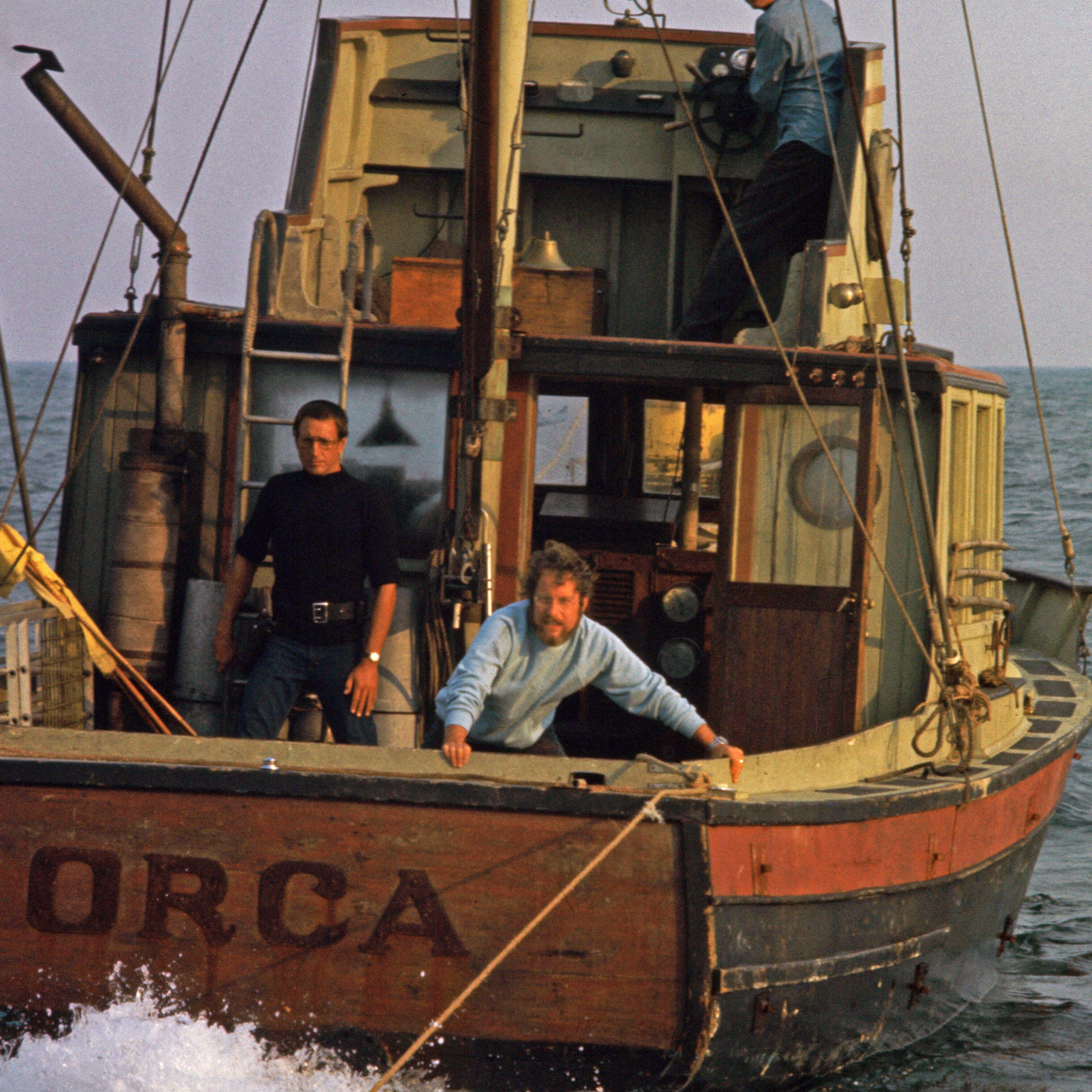The Alsta Nautoscaph made its debut in the late 1960s, at a time when skin diver watches were gaining popularity among both professionals and weekend adventurers. Housing reliable Swiss automatic movements from ETA and E. Schild, and offering excellent legibility and water resistance, the Nautoscaph became a trusted companion for divers and outdoor enthusiasts.
While other brands leaned on prestige or mass-market appeal, Alsta focused on purpose-built design and quiet confidence. The result was a timepiece that didn’t shout—but stood out.
WHAT IS THE NAUTOSCAPH?
Contrary to modern naming conventions, ‘Nautoscaph’ originally referred to Alsta’s line of water-resistant cases rated to 30 ATM (999 feet), rather than a single model. These early designs took inspiration from contemporaries such as the Aquastar 60 and Seiko 62MAS, eventually evolving into the cushion-case shape that became the Nautoscaph Superautomatic—made iconic in Jaws (1975).
Some Alsta Nautoscaph cases were even supplied to other watch brands, including Wakmann, which later became part of Breitling's legacy. This cross-brand use underscores the Nautoscaph’s reliability and appeal within the wider industry.
CORE FEATURES OF THE ORIGINAL NAUTOSCAPH
- Rotating bezel for dive timing
- Swiss automatic movement
- Highly legible dial with luminous markers
- Compact yet robust 36mm stainless steel case
- Available in no-date, date, and day-date configurations
THE NAUTOSCAPH IN CONTEXT: 1960s DIVE WATCH COMPETITORS
The 1960s were a golden era for skin diver watches. Here’s how the Alsta Nautoscaph compared to other notable models:
ZODIAC SEA WOLF
One of the earliest dive watches made widely accessible to the public. Its rugged, compact design made it a favourite among amateur divers.
BULOVA SNORKEL & OCEANOGRAPHER
Known for bold dials and reliability, these watches were designed for lifestyle adventurers and weekend explorers.
ENICAR SHERPA DIVE SERIES
Featuring innovative EPSA compressor cases and inner bezels, Sherpa models leaned slightly more technical but targeted a similar audience.
DOXA SUB
Launched in the late ’60s, the Doxa Sub brought serious diving credentials, including a 300m rating and the now-famous no-decompression bezel. While more specialised, it competed directly with the later Alsta Superautomatic.
SQUALE SKIN DIVERS
Squale supplied cases for many dive watch brands, including their own line of skin divers—very much aligned in style, performance, and pricing with the Alsta Nautoscaph.
TISSOT SEASTAR
Balancing elegance and utility, the Seastar series had broad appeal. Tissot’s brand recognition gave it commercial leverage, though Alsta remained the choice for buyers seeking a more unconventional path.
WHY ALSTA STOOD APART
While competing brands leaned on scale, prestige, or technical innovations, Alsta carved out its own niche—one that spoke to individuals who preferred quiet quality over mainstream recognition. The Nautoscaph’s minimal yet muscular design, paired with robust engineering, made it ideal for those who valued reliability and individuality.
For modern collectors and vintage watch enthusiasts, the Alsta Nautoscaph represents a different kind of choice: not the loudest, but often the most enduring.





Leave a comment
This site is protected by hCaptcha and the hCaptcha Privacy Policy and Terms of Service apply.